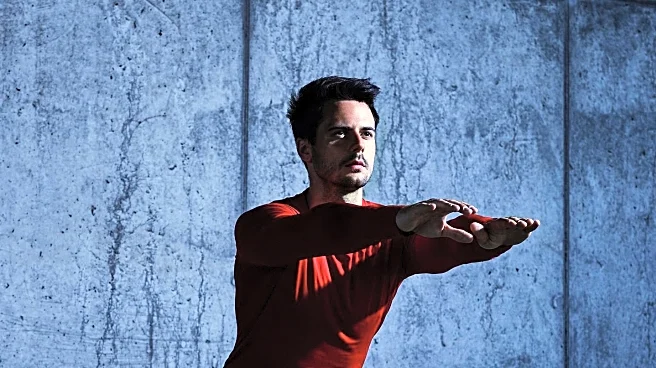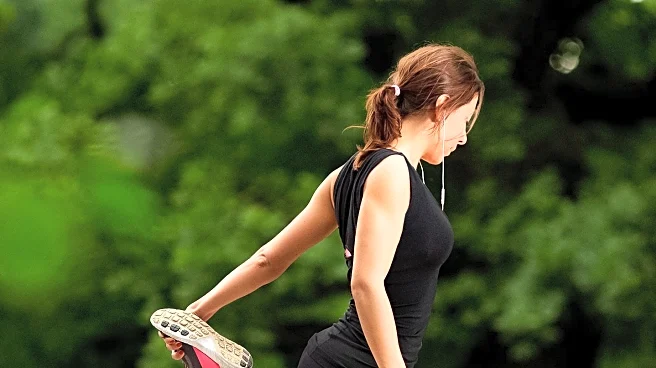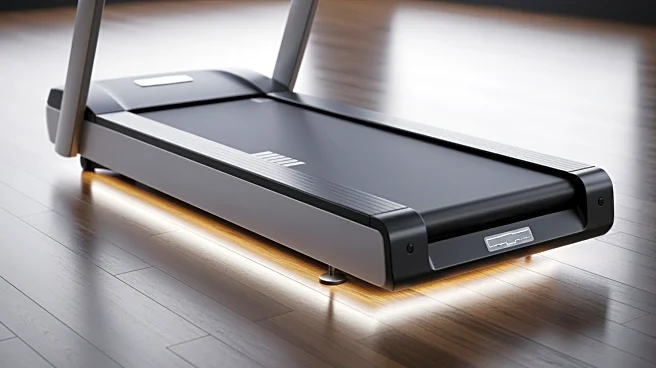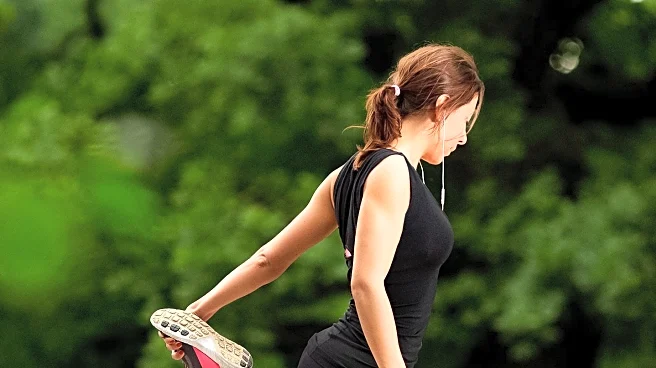What's Happening?
Walking backwards, also known as retro walking, is gaining attention as a beneficial exercise for midlife strength. Experts suggest that this unconventional method can engage different muscle groups and
improve flexibility, particularly in the hamstrings. Janet Dufek, a biomechanist at the University of Nevada, Las Vegas, advocates for walking backwards as a form of cross-training, emphasizing its ability to activate the quadriceps and relieve pressure on knee joints. Dr. Steven Svoboda, an orthopedic sports medicine specialist, supports this practice for its potential to enhance balance and resilience. Walking backwards can be performed safely on flat surfaces or treadmills, with recommendations to start slowly and increase duration gradually.
Why It's Important?
The practice of walking backwards offers significant benefits for midlife individuals seeking to diversify their fitness routines. By engaging underused muscles and improving flexibility, it can help prevent injuries and enhance overall physical performance. This exercise also activates the central nervous system, potentially improving balance and coordination. For those experiencing knee pain, walking backwards provides a low-impact alternative that reduces joint pressure. As fitness routines can become monotonous, incorporating retro walking introduces variety and excitement, encouraging continued physical activity and promoting long-term health benefits.
What's Next?
Individuals interested in trying walking backwards should consult with healthcare professionals, especially if they have existing mobility or balance issues. Starting with short intervals and gradually increasing duration is recommended to safely integrate this exercise into regular routines. Fitness enthusiasts may explore walking backwards in different environments, such as tracks or treadmills, to find what works best for them. As awareness of its benefits grows, walking backwards could become a popular addition to cross-training programs, potentially influencing fitness trends and practices.











